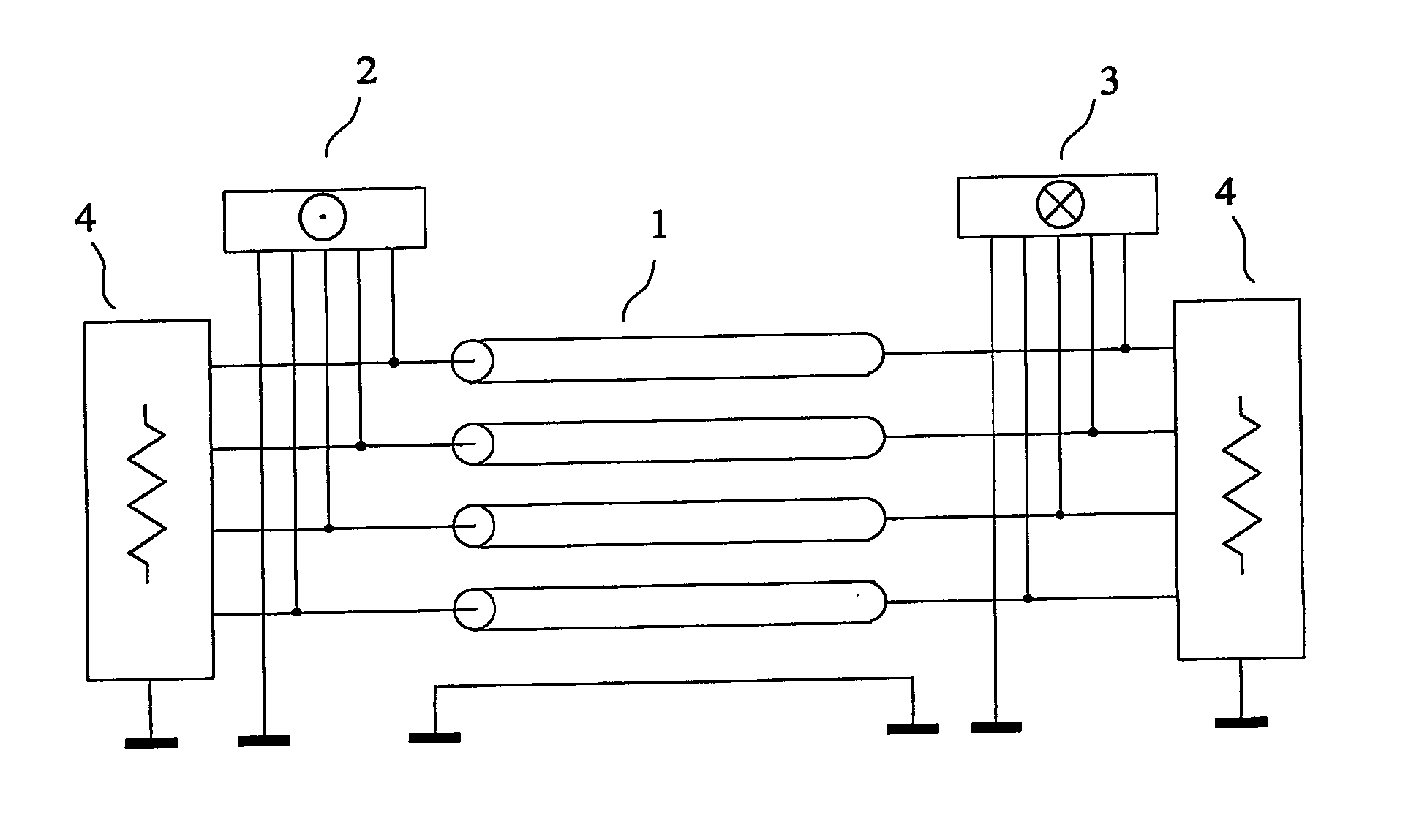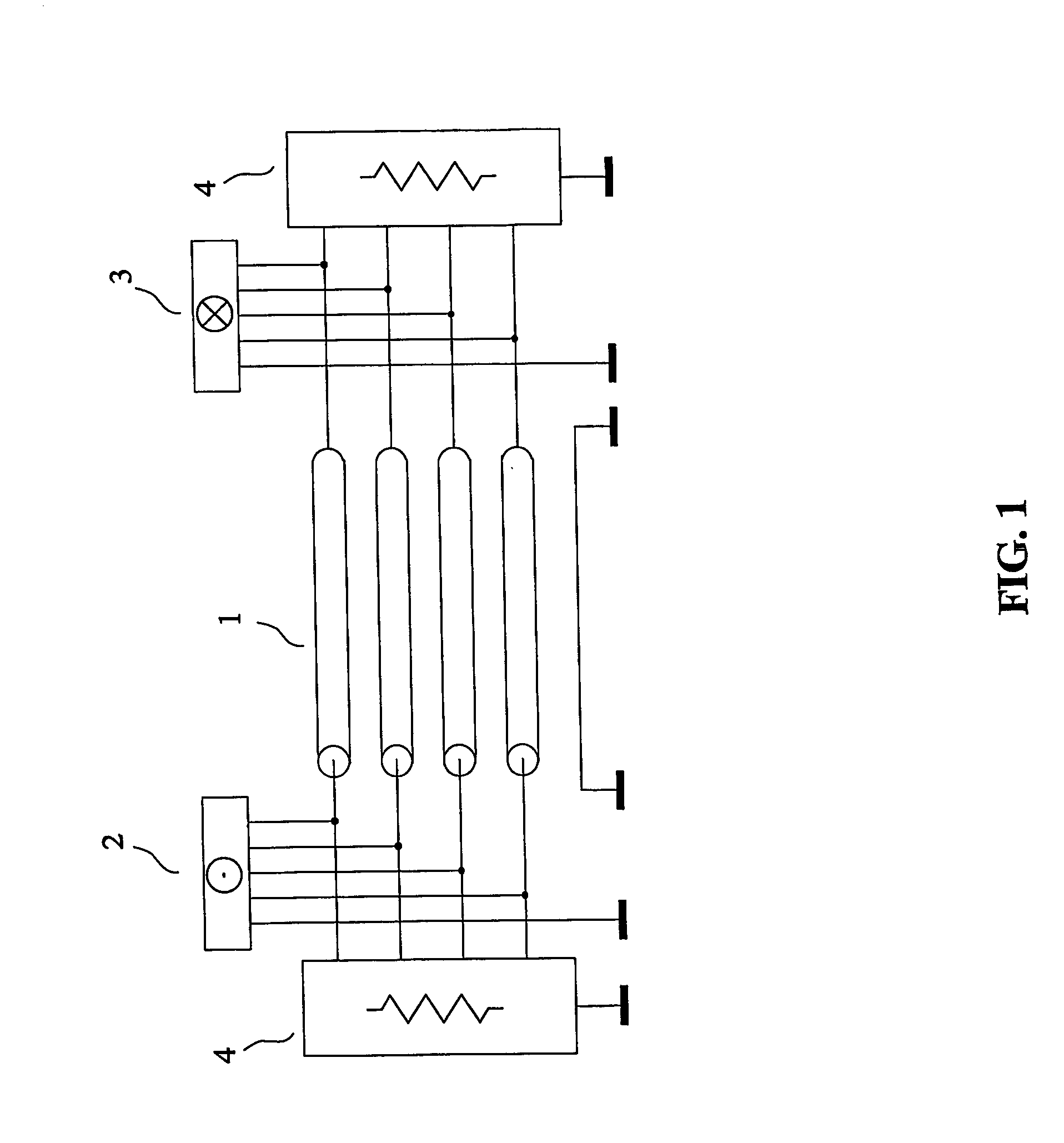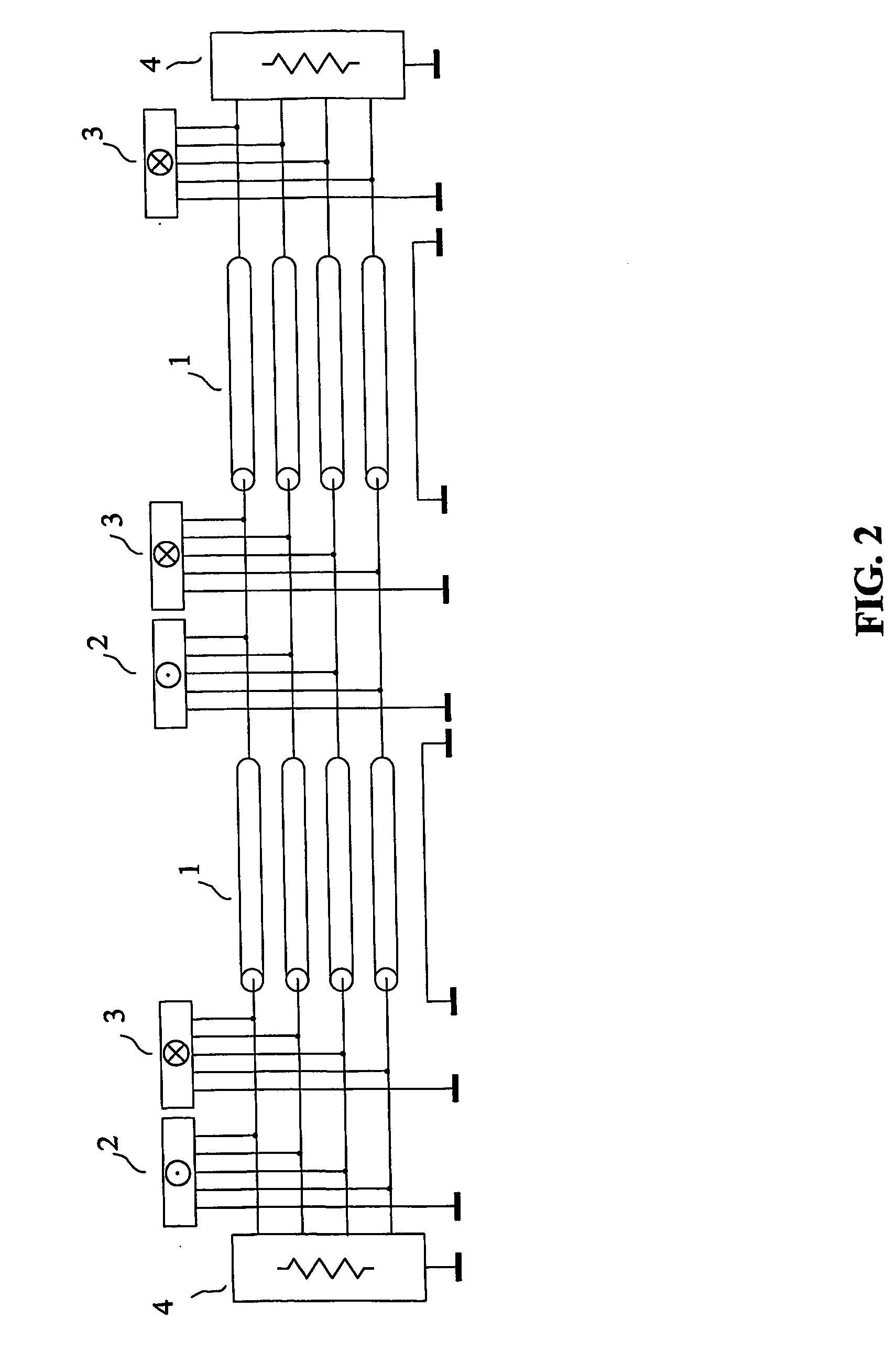Method and device for transmission with reduced crosstalk
a transmission method and crosstalk technology, applied in the field of methods and devices for transmission with reduced crosstalk, can solve the problems of not being able to describe all interconnections, not having specific physical characteristics, and being economically disadvantageous
- Summary
- Abstract
- Description
- Claims
- Application Information
AI Technical Summary
Benefits of technology
Problems solved by technology
Method used
Image
Examples
first embodiment
[0128] As a first example of a device for implementing the method of the invention, given by way of non-limiting example, we have represented in FIG. 3 a device of the invention comprising an interconnection (1) having four parallel transmission conductors and a reference conductor. The transmission conductors numbered 1, 2, 3 and 4 (this numbering is not shown in FIG. 3) may be the conductors of a flat cable fitted with a screen (or shielding), this screen being used as reference conductor. In FIG. 3, the two ends of the interconnection are each connected to a termination circuit (4) presenting an impedance matrix approximating the characteristic impedance matrix in a known frequency band. The transmitting circuit (5) receives at its input the signals of the four channels of the source (2), and its four output terminals are connected to the conductors of the interconnection, this transmitting circuit producing modal voltages on these conductors, each modal voltage being proportiona...
second embodiment (
Best Mode)
[0131] As a second example of a device for implementing the method of the invention, given by way of non-limiting example and best mode of carrying out the invention, we have represented in FIG. 4 a device of the invention, comprising an interconnection (1) having four parallel transmission conductors, and a reference conductor. The interconnection is connected at each end to a termination circuit (4). Two transmitting circuits (5) placed at two different abscissa z, receive at their inputs the signals from the four channels of each of the two sources (2), these transmitting circuits (5) producing, when they are active, modal voltages, each being proportional to the signal of one channel. Note that this is a data bus architecture, and that the signals needed to obtain the active state of at most one transmitting circuit at a given time are not shown in FIG. 4. The three receiving circuits (6) placed at three different abscissa z, have their input terminals connected to the...
third embodiment
[0133] As a third example of a device for implementing the method of the invention, given by way of non-limiting example, we have considered the application of the method of the invention inside an integrated circuit in gallium arsenide technology, confining ourselves to discussing the creation of the termination circuit(s). A paper by J. Chilo entitled “Modélisation et analyse temporelle d'un bus d'interconnexion en technologie GaAs”, published in Annales des télécommunications, vol. 40, No. 3-4, Mars-Avril l985, provides the L and C matrices of such an interconnection with 8 transmission conductors: L=(0,570,210,110,060,040,030,020,010,210,570,210,110,060,040,030,020,110,210,560,210,110,060,040,030,060,110,210,560,210,110,060,040,040,060,110,210,560,210,110,060,030,040,060,110,210,560,210,110,020,030,040,060,110,210,570,210,010,020,030,040,060,110,210,57)μ H / mC=(465-156-16-5-3-2-1-1-156523-150-14-4-2-1-1-16-150523-150-14-4-2-2-5-14-150523-150-14-4-3-3-4-14-150523-150-14-5-2-...
PUM
 Login to View More
Login to View More Abstract
Description
Claims
Application Information
 Login to View More
Login to View More - R&D
- Intellectual Property
- Life Sciences
- Materials
- Tech Scout
- Unparalleled Data Quality
- Higher Quality Content
- 60% Fewer Hallucinations
Browse by: Latest US Patents, China's latest patents, Technical Efficacy Thesaurus, Application Domain, Technology Topic, Popular Technical Reports.
© 2025 PatSnap. All rights reserved.Legal|Privacy policy|Modern Slavery Act Transparency Statement|Sitemap|About US| Contact US: help@patsnap.com



